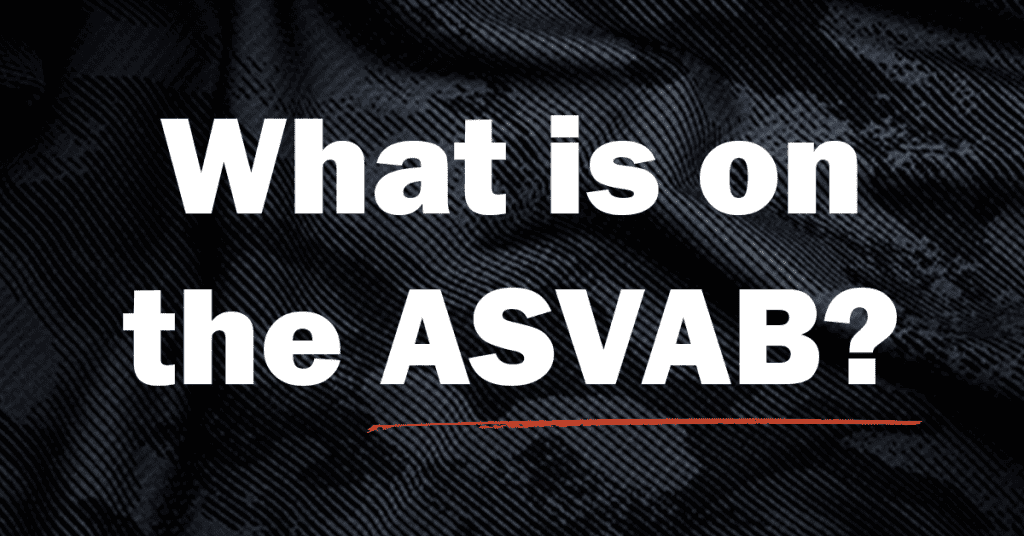
We often get asked “What is on the ASVAB test?” So, we decided to create a centralized resource that breaks down each section of the ASVAB.
The Armed Services Vocational Aptitude Battery Test (ASVAB) is the qualifying test to join the military in the United States and consists of a series of nine subtests (paper version), or ten subtests (computerized version), and is designed to measure your verbal, math, science, technology and spatial aptitude. These subtests are arithmetic reasoning, assembling objects, auto & shop information, electronics information, general sciences, mathematics knowledge, mechanical comprehension, paragraph comprehension, and word knowledge.
In this article, we’ll break down each of these subtests in depth and show you exactly what you need to study to get the best ASVAB score possible.
What are the Subtests of the ASVAB?
We refer to the ASVAB test as having nine subtests. You might also see people refer to it as having ten subtests. The reason for this is that the computer adaptive version of the ASVAB, called the CAT-ASVAB, breaks the Auto and Shop Information (AS) into two parts.
Some would consider the amount of subtests on the CAT-ASVAB to be 10 compared to the standard 9 that are on the paper-and-pencil version of the test. However, both tests cover the same material.
Also, check out our article on What are the different types of ASVAB tests you can take?
Here are the 9 subtests of the ASVAB (in alphabetical order):
Want to jump to a specific subtest? Click on the image below and you’ll be directed to that section.
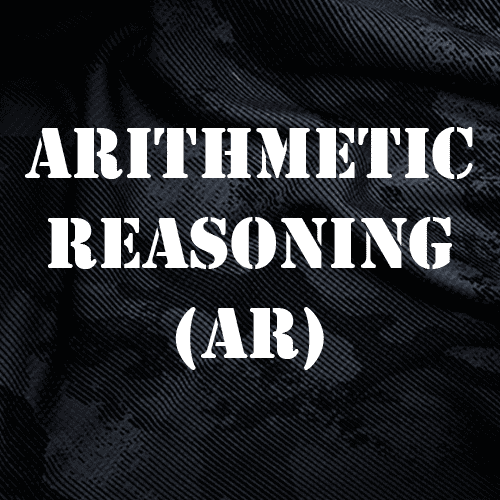

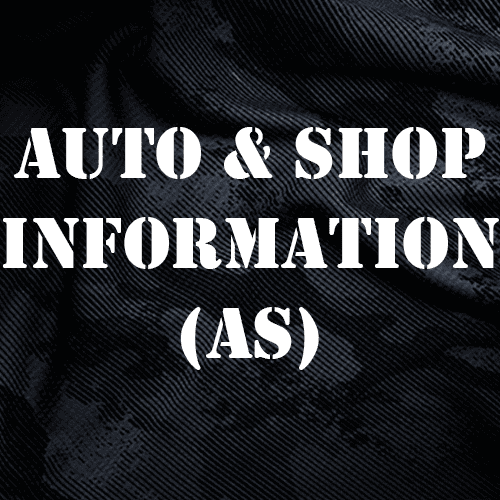
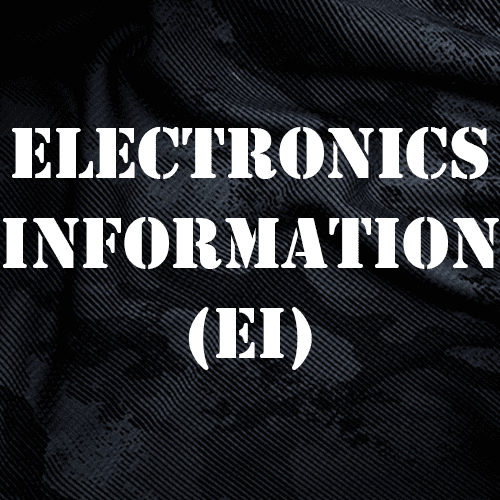
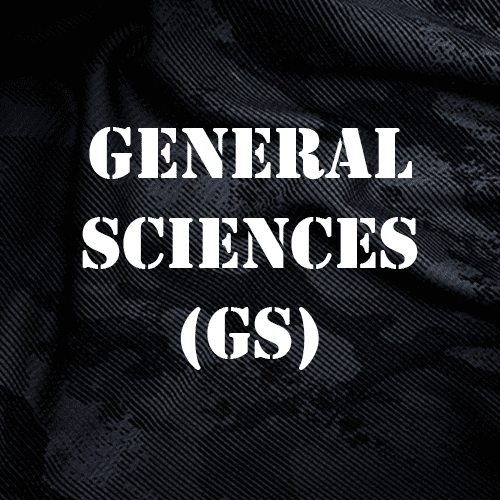
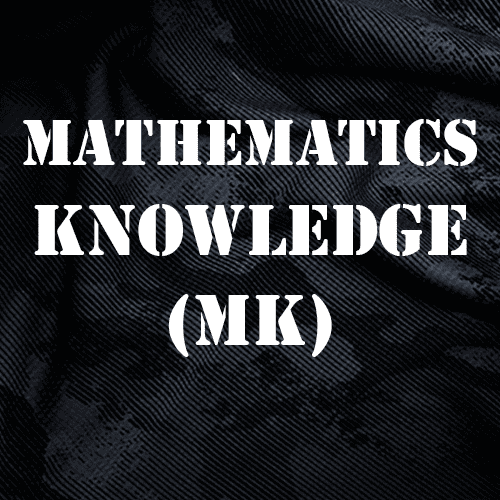
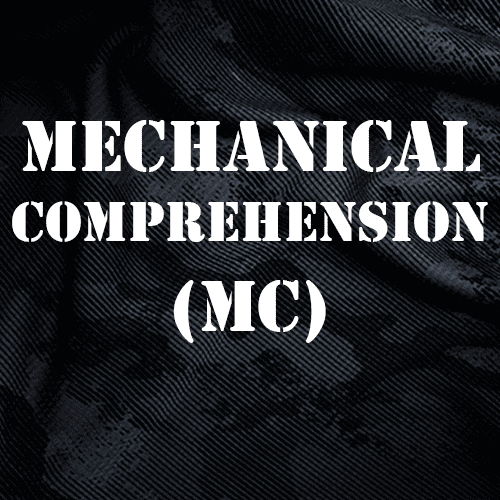

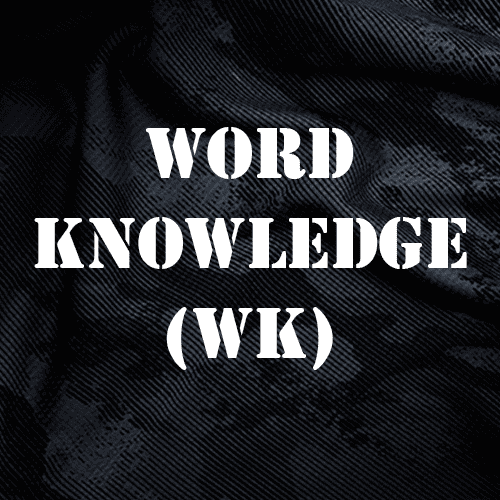
Some of the subtests above are marked with an asterisk (*). Those subtests are Arithmetic Reasoning, Mathematics Knowledge, Paragraph Comprehension and Word Knowledge and they make up what’s called your AFQT Score or Armed Services Qualification Test
You’ll need a minimum AFQT score to be eligible for any military career. If you score low on these four subtests, no matter how well you do on the other subtests, you will not be eligible for a job inside of the armed forces.
Check out our article on “What is an AFQT Score and How Does it Differ from the ASVAB?“
You’ll need to focus heavily on your math and verbal expression skills to do well, but that does not mean the other subtests aren’t important.
Doing well on other sections will open up more doors for you as far as career choices go. If you have a career in mind, we have a list of careers based on your test scores that you should look at too.
Let’s dive into each of the ASVAB subtests and see what they entail.
Arithmetic Reasoning (AR)* ASVAB Subtest

ASVAB Arithmetic Reasoning Practice Study
How long is the Arithmetic Reasoning subtest on the ASVAB?
CAT-ASVAB : 55 minutes to answer 15 questions
P&P-ASVAB : 36 minutes to answer 30 questions
What is covered in the Arithmetic Reasoning subtest of the ASVAB?
Let’s first look at the Arithmetic Reasoning (AR) subtest of the ASVAB. The AR subtest tests your ability to solve arithmetic word problems and apply mathematical reasoning to different scenarios. Here are some of the key topics covered in the AR subtest:
- Basic Operations: This includes addition, subtraction, multiplication, and division of whole numbers, fractions, and decimals.
- Word Problems: These are word problems that require you to interpret the information provided and apply mathematical operations to solve them. These problems can involve concepts like percentages, ratios, averages, and proportions.
- Algebraic Equations: You may encounter questions that involve setting up and solving simple algebraic equations.
- Unit Conversion: Questions may require you to convert units of measurement, such as distance, time, weight, or volume.
- Geometry: Basic geometric concepts, such as calculating area, perimeter, and volume.
To prepare for the Arithmetic Reasoning subtest, it’s important to review and practice a wide range of mathematical operations, including addition, subtraction, multiplication, and division.
Additionally, focus on solving word problems and translating verbal information into mathematical expressions or equations. Understanding basic algebraic concepts and being comfortable with unit conversions and geometric formulas will also be beneficial.
Key math concepts on Arithmetic Reasoning ASVAB subtest
Here are some of the key concepts you’ll need to know to do well on the Arithmetic Reasoning (AR) section of the ASVAB:
- averages, means and medians
- common arithmetic definitions
- divisibility rules
- exponents and radicals
- factorials
- fractions, decimals, and scientific notation
- order of operations and calculation rules
- percentages
- primes, factors, multiples and remainders
- ratios, proportions, and rates
- sequences and probability
Check out some sample questions at https://www.officialasvab.com/arithmetic-reasoning-ar/
Assembling Objects (AO) ASVAB Subtest

FREE Assembling Objects Study Guide
How long is the Assembling Objects subtest on the ASVAB?
CAT-ASVAB : 17 minutes to answer 15 questions
P&P-ASVAB : 15 minutes to answer 25 questions
What kind of questions are on the Assembling Objects subtest of the ASVAB?
The Assembling Objects (AO) subtest tests your spatial reasoning skills and your ability to mentally manipulate and assemble objects. Here’s what you need to know:
- Object Manipulation: The Assembling Objects subtest presents you with two-dimensional objects that have been disassembled or rearranged. You’ll need to mentally visualize how the pieces fit together and determine the correct arrangement of the objects.
- Spatial Awareness: The AO subtest evaluates your ability to understand spatial relationships and identify patterns. You’ll need to analyze the individual components given, consider their shapes, sizes, and orientations, and visualize how they can be assembled to form a complete object.
- Rotations and Transformations: Some of the questions in the AO subtest may involve rotating or mirroring the pieces to find the correct arrangement. You should be able to mentally manipulate the objects and determine the correct positions and orientations.
- Hidden Components: Some questions may include objects with hidden or obscured components. You’ll need to identify the hidden parts and consider how they fit into the overall assembly.
To prepare for the Assembling Objects subtest, it’s helpful to practice spatial visualization and mental manipulation of objects.
Developing your spatial reasoning skills through activities like puzzles, visualizing three-dimensional objects, and mentally manipulating shapes will help you become familiar with the types of objects and arrangements you’ll encounter.
Practice identifying patterns, recognizing symmetries, and understanding spatial relationships.
Here are some Assembling Objects sample questions: https://www.officialasvab.com/assembling-objects-ao/
Auto and Shop Information (AS) ASVAB Subtest

Get our FREE Auto & Shop Information Study Guide Today!
How long are the Auto & Shop Information subtests on the ASVAB?
CAT-ASVAB (Auto Information) : 7 minutes to answer 10 questions
CAT-ASVAB (Shop Information): 6 minutes to answer 10 questions
P&P-ASVAB (Covers both Auto and Shop) : 11 minutes to answer 25 questions
As a reminder, the computerized version of the test has two sections for Auto Information and Shop Information whereas the paper-and-pencil version of the ASVAB makes this a single subtest. Both tests cover the same material however.
What is on the Auto & Shop Information subtest of the ASVAB?
The Auto and Shop Information (AS) subtest of the ASVAB assesses your knowledge of automotive maintenance and repair, as well as woodworking and metal shop practices. Here’s what you need to know:
- Automotive Knowledge: The Auto and Shop Information subtest may cover various topics related to automobiles, including internal combustion engine components, fuel systems, electrical systems, braking systems, and automotive tools. You should be familiar with the basic functioning and maintenance of vehicles.
- Mechanical Systems: The AS subtest may ask you questions to make sure you understand mechanical systems, such as gears, pulleys, levers, and simple machines. You should have a basic understanding of how these systems work and how they are used in various applications.
- Woodworking: The AS subtest may include questions related to woodworking, including knowledge of tools, materials, joinery techniques, and safety practices. You should be familiar with woodworking tools, measurements, and basic construction principles.
- Metal Shop: Questions may also cover metal shop practices, including knowledge of metalworking tools, welding techniques, metal cutting, and safety precautions. You should have a basic understanding of metalworking processes and common metalworking tools.
To prepare for the Auto and Shop Information subtest, it’s helpful to review basic automotive concepts, such as engine components, electrical systems, and maintenance procedures. Familiarize yourself with common automotive tools and their uses.
For woodworking and metal shop, study the basic principles, tools, and safety practices. Understand common woodworking joinery techniques, measurement units, and safety procedures.
For metalworking, familiarize yourself with different welding techniques, metal cutting tools, and safety precautions.
Here are some Auto subtest example questions: https://www.officialasvab.com/auto-information-ai/
and some Shop Information subtest example questions: https://www.officialasvab.com/shop-information-si/
Electronics Information (EI) ASVAB Subtest

FREE Electronics Information Study Guide
How long is the Electronics Information subtest on the ASVAB?
CAT-ASVAB : 10 minutes to answer 15 questions
P&P-ASVAB : 9 minutes to answer 20 questions
What kind of questions are on the Electronics Information subtest of the ASVAB?
The Electronics Information (EI) subtest of the ASVAB is designed to evaluate your understanding of basic electrical and electronic principles. Here’s what you need to know:
- Electrical Components: The Electronics Information subtest covers various electrical components, such as resistors, capacitors, inductors, diodes, transistors, and integrated circuits. You should be familiar with their symbols, functions, and basic characteristics.
- Circuit Analysis: Questions in the EI subtest may involve analyzing simple electrical circuits and understanding their behavior. This includes topics like voltage, current, resistance, Ohm’s Law, series and parallel circuits, and voltage dividers.
- Digital Electronics: The EI subtest may include questions related to digital electronics and logic circuits. You should be familiar with concepts like binary numbers, logic gates (AND, OR, NOT), truth tables, and basic digital circuits.
- Measurement and Tools: Some questions in this subtest may require you to interpret electrical measurements, such as voltage, current, and resistance. You should also have a basic understanding of commonly used tools and equipment, such as multimeters and oscilloscopes.
To prepare for the Electronics Information subtest, be sure to study basic electrical and electronic principles. Review the functions and characteristics of common electrical components, understand how circuits work, and practice analyzing simple circuits. Familiarize yourself with digital electronics concepts and logic gates.
Understanding electrical measurements and being able to interpret them accurately is crucial. Review the units of measurement, such as volts, amps, and ohms, and practice converting between them.
Here are some sample questions from Official ASVAB: https://www.officialasvab.com/electronics-information-ei/
General Sciences (GS) ASVAB Subtest
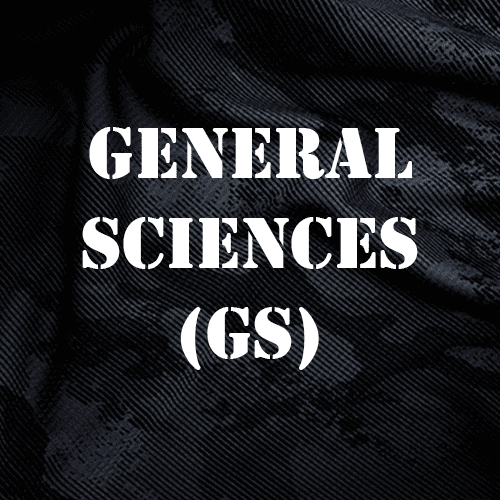
Check out our FREE General Sciences Study Guide
How long is the General Sciences subtest on the ASVAB?
CAT-ASVAB : 10 minutes to answer 15 questions
P&P-ASVAB : 11 minutes to answer 25 questions
What kind of questions are on the General Sciences subtest of the ASVAB?
The General Science (GS) subtest of the ASVAB covers a range of scientific topics to assess your understanding of basic science principles. Here are some of the main topics you can expect to see on the GS subtest:
- Biology: This includes topics such as cell structure and function, genetics, human anatomy and physiology, ecology, and the classification of organisms.
- Chemistry: The chemistry topics covered in the General Science subtest may include the periodic table, chemical reactions, atomic structure, chemical bonding, acids and bases, and states of matter.
- Physics: This covers fundamental principles of physics, including motion, forces, energy, electricity, magnetism, light, sound, and the laws of thermodynamics.
- Earth Science: This includes topics related to the Earth and its systems, such as geology, weather and climate, Earth’s structure, rocks and minerals, the water cycle, and natural resources.
- Astronomy: Basic concepts related to the study of celestial bodies, including the solar system, stars, galaxies, and the universe, may be covered.
It’s important to note that the GS subtest doesn’t require an in-depth knowledge of these subjects. Instead, it assesses your familiarity with basic scientific principles and your ability to apply them to different situations.
To prepare for the General Science subtest, consider reviewing key concepts and terminology in biology, chemistry, physics, and earth science. Understanding the basic principles and having a good grasp of scientific vocabulary will be beneficial for performing well on this subtest.
Check out these sample General Sciences questions from Official ASVAB
Mathematics Knowledge (MK)* ASVAB Subtest

Full study guide for Mathematical Knowledge
How long is the Mathematics Knowledge subtest on the ASVAB?
CAT-ASVAB : 10 minutes to answer 15 questions
P&P-ASVAB : 11 minutes to answer 25 questions
What kind of questions are on the Mathematics Knowledge subtest of the ASVAB?
The Mathematics Knowledge (MK) subtest of the ASVAB evaluates your mathematical knowledge and your ability to apply mathematical concepts to different problem-solving scenarios. Here’s what you need to know:
- Algebra: The Mathematics Knowledge subtest includes questions that assess your understanding of algebraic concepts such as equations, inequalities, variables, and functions. You may see questions involving simplifying expressions, solving equations, or working with algebraic formulas.
- Geometry: Basic geometric principles and formulas are covered in the MK subtest. This includes concepts related to angles, lines, triangles, circles, polygons, and three-dimensional shapes. You may be asked to calculate areas, perimeters, volumes, or angles.
- Measurement: Questions in the MK subtest may involve units of measurement, conversions, and applications of measurement in real-world contexts. This can include topics like distance, time, speed, weight, volume, and temperature.
- Probability and Statistics: The MK subtest may include questions related to probability and statistics. This can involve understanding concepts such as probability, mean, median, mode, range, and interpreting data from graphs and charts.
- Number Operations: This covers basic arithmetic operations such as addition, subtraction, multiplication, and division of whole numbers, fractions, decimals, and percentages. You may also encounter questions involving ratios, proportions, and percentages.
To prepare for the Mathematics Knowledge subtest, it’s important to review and practice a wide range of mathematical concepts.
Make sure you have a solid understanding of algebraic principles, basic geometry, measurement conversions, and number operations.
Practice solving various types of mathematical problems and familiarize yourself with different formulas and equations commonly used in these areas.
Here is a quick overview of some of the mathematical items you may find on the Mathematics Knowledge subtest:
- algebraic expressions
- monomials and binomials
- quadratic equations
- solving for variables
- triangles
- quadrilaterals
- circles
- geometry
Here are some Mathematics Knowledge sample questions: https://www.officialasvab.com/mathematics-knowledge-mk/
What are the differences between the AR and MK subtests?
The Arithmetic Reasoning (AR) and Mathematics Knowledge (MK) both cover mathematical concepts but target different aspects of your mathematical abilities.
Arithmetic Reasoning focuses on assessing your ability to solve arithmetic word problems and apply mathematical reasoning to real-life situations.
Mathematics Knowledge focuses on evaluating your knowledge and understanding of broader mathematical concepts like algebra, geometry, measurement, etc.
Think of Arithmetic Reasoning as using mathematics in the real-world and mathematics knowledge as testing your understanding of the concept behind the math.
Mechanical Comprehension (MC) ASVAB Subtest

FREE Mechanical Comprehension Study Guide
How long is the Mechanical Comprehension subtest on the ASVAB?
CAT-ASVAB : 22 minutes to answer 15 questions
P&P-ASVAB : 19 minutes to answer 25 questions
What kind of questions are on the Mechanical Comprehension subtest of the ASVAB?
The Mechanical Comprehension (MC) subtest of the ASVAB assesses your understanding of basic mechanical principles and your ability to apply them to different scenarios. Here’s what you need to know:
- Mechanical Concepts: The Mechanical Comprehension subtest covers various mechanical principles, such as force, motion, energy, work, power, and mechanical advantage. You should have a basic understanding of how these concepts relate to different mechanical systems.
- Simple Machines: Questions in the MC subtest may involve identifying and understanding the functions of simple machines, such as levers, pulleys, inclined planes, wheels, and axles. You should be able to analyze the mechanical advantage and applications of these machines.
- Mechanical Systems: The MC subtest may include questions related to mechanical systems found in everyday objects, vehicles, and equipment. This can involve understanding the components, operation, and maintenance of mechanical systems, such as gears, springs, cams, belts, and linkages.
- Fluid Mechanics: Some questions may cover basic principles of fluid mechanics, including topics like pressure, buoyancy, flow, and hydraulic and pneumatic systems.
You should have a basic understanding of fundamental mechanical principles and study the concepts of force, motion, work, and energy, and how they apply to different mechanical systems.
Familiarize yourself with the functions and applications of simple machines and understand how they provide mechanical advantage.
Study the components and operation of common mechanical systems, such as gears, pulleys, and linkages.
You should have a basic understanding of fluid mechanics and the principles behind hydraulic and pneumatic systems.
Practice these sample Mechanical Comprehension questions from Official ASVAB.
Paragraph Comprehension (PC)* ASVAB Subtest

ASVAB Paragraph Comprehension Practice Test & Study Guide
How long is the Paragraph Comprehension subtest on the ASVAB?
CAT-ASVAB : 27 minutes to answer 10 questions
P&P-ASVAB : 13 minutes to answer 15 questions
What kind of questions are on the Paragraph Comprehension subtest of the ASVAB?
The Paragraph Comprehension (PC) subtest of the ASVAB evaluates your reading comprehension skills and your ability to understand and draw conclusions from written passages. Here’s what you need to know:
- Passage Types: The Paragraph Comprehension subtest presents you with various types of passages, including informational texts, narratives, persuasive essays, and technical documents. The passages may cover a wide range of subjects, such as history, science, social studies, and more.
- Comprehension Questions: After reading each passage, you will need to answer multiple-choice questions that assess your understanding of the passage. These questions test your ability to identify main ideas, make inferences, draw conclusions, analyze details, understand the author’s tone or purpose, and recognize the organization of the passage.
- Vocabulary and Context: Some questions require you to determine the meaning of words or phrases based on their context within the passage. Having a good grasp of vocabulary and the ability to infer meanings from context will be beneficial.
To prepare for the Paragraph Comprehension subtest, it’s important to practice reading and comprehension of a variety of texts. This can include articles, books, newspapers, and online resources.
Focus on understanding the main ideas, identifying supporting details, and recognizing the author’s tone or perspective.
Additionally, practice answering questions based on the information presented in the passages to improve your ability to extract key information and make logical deductions.
Here are some sample questions on the Paragraph Comprehension subtest: https://www.officialasvab.com/paragraph-comprehension-pc/
Word Knowledge (WK)* ASVAB Subtest

ASVAB Word Knowledge Practice Test & Study Guide
How long is the Word Knowledge subtest on the ASVAB?
CAT-ASVAB : 9 minutes to answer 15 questions
P&P-ASVAB : 11 minutes to answer 35 questions
What kind of questions are on the Word Knowledge subtest of the ASVAB?
The Word Knowledge (WK) subtest of the ASVAB tests your vocabulary and ability to identify the meanings of words. Here’s what you need to know:
- Synonyms: On the Word Knowledge subtest, you will encounter questions that ask you to choose a word or phrase that is closest in meaning to a given word. For example, you may be asked to select a synonym for “abundant.”
- Antonyms: Some questions will require you to select a word or phrase that is opposite in meaning to a given word. For instance, you might be asked to choose an antonym for “humble.”
- Analogies: Analogical reasoning is tested by presenting a pair of words and asking you to select another pair of words that have a similar relationship. For example, if given the analogy “hot is to cold as fast is to _____,” you would need to select the word that completes the analogy, which in this case would be “slow.”
- Word Definitions: You may be asked to choose the correct definition for a given word. It’s important to have a good understanding of the meanings of common words and be able to distinguish between subtle differences in definitions.
To prepare for the Word Knowledge subtest, it’s beneficial to expand your vocabulary by reading a variety of books, newspapers/magazines, and articles.
Additionally, using vocabulary-building resources like flashcards or online word lists can be helpful. Regularly practicing with synonyms, antonyms, and analogies will improve your ability to discern word meanings and relationships.
Remember, it’s not just about memorizing definitions but also understanding how words are used in different contexts. This will enable you to select the most appropriate word or phrase based on its meaning.
Check out these Word Knowledge sample questions from Official ASVAB
What’s Next?
Now that you have an understanding of what’s on the ASVAB and specifically what’s in each subtest, it’s time to start studying for the ASVAB.
We have a series of study guides here on our site but we also encourage you to purchase a few practice tests from around the web and other test prep companies. The money you spend on these practice test and premium study guides should be considered an investment in your future.
As we build our site out, we’ll have our own study guides to help you perform the best on the ASVAB. Best of luck!
Recent Posts
What is an AFQT Score and How Does it Differ from ASVAB? Considering a military career opens up a world of opportunities, but it also comes with it's own unique set of challenges. If you are...
For the most part, the Armed Services Vocational Aptitude Battery (ASVAB) isn’t hard to pass per se. But, that doesn’t mean you can walk into the test without preparing or studying for it....
